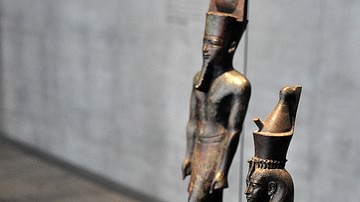Review

| Rating: | |
|---|---|
| Title: | Women Religious Crossing between Cloister and the World: Nunneries in Europe and the Americas, ca. 1200–1700 (Spirituality and Monasticism, East and West) |
| Author: | Mercedes Pérez Vidal |
| Audience: | University |
| Difficulty: | Hard |
| Publisher: | Arc Humanities Press |
| Published: | 2023 |
| Pages: | 170 |
This book is recommended to advanced scholars of medieval and early modern religious history. This collection of essays focuses on how women participated in and were shaped by monastic and religious life. The contribution this book makes is to examine medieval and early modern gender history through a transatlantic lens.
Women Religious Crossing Between Cloister and the World: Nunneries in Europe and the Americas, ca. 1200-1700 is the result of a collaborative research project focused on the relationships between women and the “religious.” Edited by art historian Mercedes Pérez Vidal, a research fellow at Heinrich Heine University Düsseldorf, this collection of essays analyzes religious women from the Middle Ages through the Early Modern period through a transnational lens. The Société d’Études Interdisplinaires sur les Femmes au Moyen Âge et à la Renaissance (SEIFMAR) organized the research project, and its goal was to examine how women participated in and were shaped by monastic and religious life. As a transnational undertaking, the volume also takes a comparative geographical approach to women and religious life in Europe and America.
The collection originated as SEIFMAR conference papers that were developed into articles. There are seven essays in the collection. Each essay addresses one or more of the four themes from the conference including studying religious women across time, space, and category; examining women’s agency within and outside the cloister; analyzing race and social class among religious women and studying material objects through cultural networks as a mode of creating and extending power. The essays were written by European and Latin American scholars, and each essay concludes with findings and an extensive bibliography. Chapter One by Sylvie Duval examines “Female Dominican Identities” while Chapter Five by Doris Bienko de Peralta is titled “Transatlantic Circulation of Objects, Books, and Ideas in Mid-Seventeenth Century Mexican Nunneries.” The last chapter by Annalena Müller is in French and focuses on class-based feminine power at the convent of Fontevraud in the 17th century.
Vidal makes a convincing argument that scholarship spanning continents focused on religious women, agency, and the transmission of ideas expands the historiographies of empire, nation, gender, and class. The book illustrates that religious women were political and powerful purveyors of information and played a role in shaping religious identity inside and outside of the convent both in Europe and the Americas.
This is not a collection aimed at a wide readership. It is a text aimed at medieval and early modern scholars. While the whole collection could be beneficial in a graduate classroom setting, it may be too advanced for undergraduate students. There are individual chapters such as Claudia Sutter’s piece, "In Touch with the Outside: The Economic Exchanges of the Observant Dominican Convent of St. Catherine in St. Gallen," which would work well in a European medieval course illustrating the economic exchanges of the time through the lens of gender. Miguel Garcia-Fernandez’s article, "Beyond the Wall: Power, Parties, and Sex in Late Medieval Galician Nunneries," would be interesting to those studying gender and sexuality in a medieval history course. I would recommend this collection to scholars who are interested in the intersection between medieval and early modern gender dynamics concerning religious history. The book is part of a series focused on Western and Eastern Christian communities from 500-1500 CE and could be of interest to a broader readership to those who have some prior knowledge of medieval and early modern history. In other words, this is not a book for those new to the subject. Transnational academic histories of medieval and early modern women are rather limited in terms of scholarship, and this collection contributes to understanding women’s agency, the transmission of information, and power structures through the lens of the "religious" in a new and worthwhile way.
About the Reviewer
Cite This Work
APA Style
Palmer, K. (2024, September 10). Women Religious Crossing between Cloister and the World: Nunneries in Europe and the Americas, ca. 1200–1700. World History Encyclopedia. Retrieved from https://www.worldhistory.org/review/470/women-religious-crossing-between-cloister-and-the/
Chicago Style
Palmer, Kelly. "Women Religious Crossing between Cloister and the World: Nunneries in Europe and the Americas, ca. 1200–1700." World History Encyclopedia. Last modified September 10, 2024. https://www.worldhistory.org/review/470/women-religious-crossing-between-cloister-and-the/.
MLA Style
Palmer, Kelly. "Women Religious Crossing between Cloister and the World: Nunneries in Europe and the Americas, ca. 1200–1700." World History Encyclopedia. World History Encyclopedia, 10 Sep 2024, https://www.worldhistory.org/review/470/women-religious-crossing-between-cloister-and-the/. Web. 23 Apr 2025.




